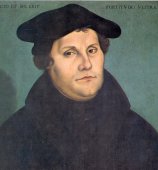
Worksheets and No Prep Teaching Resources
Reading Comprehension Worksheets
Renaissance

Renaissance
 Worksheets and No Prep Teaching Resources Reading Comprehension Worksheets Renaissance |
 Renaissance |
| edHelper's suggested reading level: | grades 6 to 8 | |
| Flesch-Kincaid grade level: | 7.9 |
|
Martin Luther
By Sharon Fabian |

|
 1 Martin Luther didn't plan to start a new church, much less change the course of history. Yet, he did both of those things. Martin Luther was the leader of the Protestant Reformation movement that was the beginning of the Lutheran Church as well as many other protestant churches that followed. The effects of the Reformation were felt all over Europe and even as far away as North and South America.
1 Martin Luther didn't plan to start a new church, much less change the course of history. Yet, he did both of those things. Martin Luther was the leader of the Protestant Reformation movement that was the beginning of the Lutheran Church as well as many other protestant churches that followed. The effects of the Reformation were felt all over Europe and even as far away as North and South America. |
Create Weekly Reading Books
Prepare for an entire week at once! |
| Leave your feedback on Martin Luther (use this link if you found an error in the story) |
 |
Renaissance
|
 |
Social Studies
|